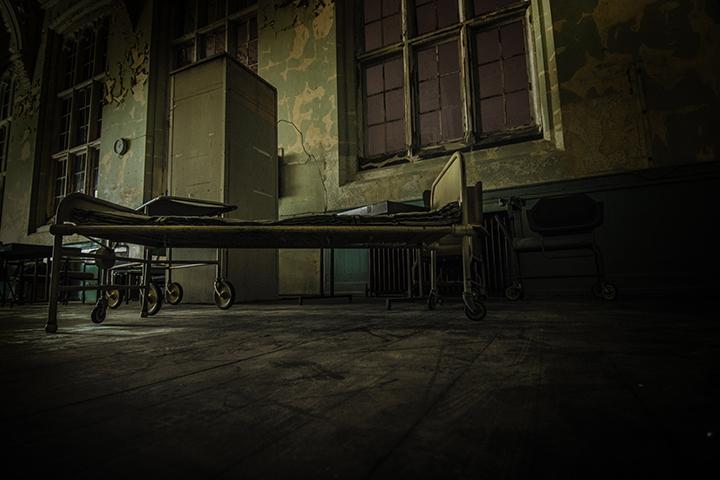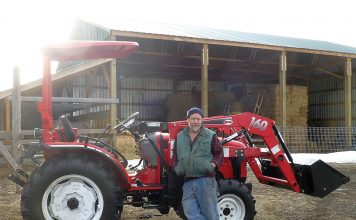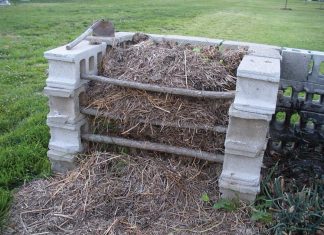 |
|
| Issue #74 • March/April, 2002 |
After September 11, 2001, all of us became much more concerned with protecting our families from biological, nuclear, and terrorist attacks. However, if you followed up by trying to learn more about civil defense in the United States you soon found out the dirty little secretthere isn’t a national civil defense program in the United States today.
|
After our National Civil Defense Program died a quiet death in the 1970s, the Federal Emergency Management Agency (FEMA) took its place, but with an entirely different set of goals. FEMA is not in the business of promoting self-preservation or shelter construction. Our government has taken the position that it would be impossible to construct enough government-funded shelters to protect all United States citizens, and even if it did there is the belief that most of these shelters could not provide enough protection and would not be properly maintained.
It is the public’s attitude that survival preparation is somehow a waste of time because life would not be worth living after a nuclear attack. This is not only untrue, but borders on a premeditated form of national suicide. This is not the attitude of most other governments. Their view is that with minimum civil defense training and some basic advance preparation, most people can survive almost any calamity, including a nuclear attack, and go on to rebuild a new life.
A fatalistic federal response
FEMA views its role as a facilitator of emergency response after a natural catastrophe has happened. Many feel there is nothing that can be done to protect our large population in advance of an unknown threat, so better to organize for handling mass casualties and mass evacuation after it happens. Although our government does not currently promote any form of self-protection for its citizens, it does provide well-supplied underground shelters for “critical” Federal government employees and elected officials. As of this writing, there is no Federal agency providing shelter designs that have been tested and approved. Most of the shelter designs available are reprints from testing that was done as part of atomic bomb testing during the early 1950s, and they do not reflect the more advanced construction materials and survival equipment available today.
|
To fill this lack of up-to-date information at the Federal level, the Internet has become the primary source of design and product information related to emergency shelter construction. But how is the average homeowner going to know what designs work best and what should be done since there isn’t a “government seal of approval” technical review or standardized rating system?
Also now missing, but originally included in the Federal civil defense program, is civilian training. Just what would you do if you actually heard an emergency warning? Should you go to the lowest point, highest point, jump in the car and evacuate, lay down in a ditch, put on a gas mask, get under a doorway, or stay where you are? Each of these answers could be right or wrong depending on the threat, but without any training or guidance most citizens will just follow the herdeven if it’s over the cliff.
The starting point for taking control of your own protection starts with identifying what are the most likely threats you face, and what type of shelter will offer the best protection from these threats.
Types of shelters
There are many potential life threatening events facing a typical family today. Depending on where you live, some threats are more likely than others, but in almost all cases there is an emergency shelter design that can reduce your risks and lesson your discomfort. Before going into more specific details on shelter designs, let us first review the many uses for a shelter and the different types of shelters that can be built.
An underground storm-type shelter could protect your family from weather related threats including tornadoes and hurricanes. A well-stocked basement with emergency lighting and heat could provide comfort during an extended power outage or snowstorm. A fireproof type shelter could provide life saving protection for family members in the event of a fast moving forest fire or home fire. A bulletproof type shelter hidden in a bedroom closet can save the lives of family members during break-ins by lawless vandals.
|
Many homeowners are now installing bulletproof safe rooms inside existing homes. These shelters are usually prefabricated metal enclosures with heavy metal doors, and they are designed to fit inside a bedroom closet or add-on room. These shelters are primarily for temporary personal protection from intruders or vandals, and are not intended to provide protection from radiation or biological type threats.
If you live near a nuclear power plant or military target, a fallout type shelter could improve your chance of surviving a biological or nuclear attack or accident. Most people today believe it is not possible or desirable to survive a nuclear explosion. However, unless you are located near the point of the actual impact, it is fairly easy to survive the blast by knowing what to do and seeking the safety of a properly designed fallout shelter. The greatest danger from a nuclear explosion comes in the form of radioactive vaporized dirt that is sucked up into the sky and soon starts to fall back to earth and cover the ground like a deep snow. Most of this material will loose most of its life threatening radioactivity in as little as two weeks. It is not unrealistic for a family to live comfortably inside a properly furnished shelter for this brief period until the exterior radiation levels reach safe limits.
Dual use shelter
Many people consider installing an emergency shelter a waste of space and money, especially if it is never used, but what if it has another function? What if your emergency shelter is also that big food pantry you always wanted, or a cool wine cellar, or a hobby room? In other words, the shelter function is in the design, but this will not necessarily interfere with the everyday use for this room or space. The following shelter selection guidelines will provide a good place to start.
Basic shelter guidelines
If you have viewed pictures of the flat concrete slabs remaining after a tornado or hurricane with the rest of the house missing, you will see why a storm shelter will probably need to be underground to provide suitable protection from high winds. If located within a house, the shelter should be constructed of strong nonflammable building materials like steel reinforced block and concrete. Since flooding can accompany many storms, the danger of high water needs to be considered when designing a below grade storm shelter. Basements can be used for some types of shelters, but they should not rely on the wood floor above for a secure roof. A basement shelter should have its own concrete roof just below the wood framing above.
|
If you want protection from radiation, you will need at least 12 inches of concrete to provide even a basic level of radiation shielding. If this is not practical for your basement, a 24 to 36-inch layer of sandbags will provide a suitable substitute, and be much cheaper to build. Any shelter should provide a minimum of 20 square feet of floor area per occupant. Most underground radiation shelters have at least three feet of earth cover, and use an entry having one or more 90-degree turns to block radiation which travels in a straight line.
Many do-it-yourself type underground shelters can be made from large diameter galvanized corrugated steel culverts or concrete storm pipe, or fabricated rectangular steel tubes in 10 to 40-foot lengths. Some people are even burying metal containerized cargo trailers to make their own low cost shelters. Although these have very strong corners to allow stacking several high, their thin metal sides and roofs are weak and require extensive reinforcement to prevent buckling when backfilled. Several manufacturers now offer fully assembled steel and fiberglass underground shelters that can be shipped by trailer to the site and buried, leaving only an access door and vent pipe exposed above ground.
Site-built underground shelters usually follow the same construction techniques used to build home basements, but roof span widths should be minimized due to the extremely heavy column loading for an earth covered concrete roof deck. The potential for moisture condensation on cool interior shelter walls and ceilings, and a higher potential for water leaks must be addressed in any underground structure. Many shelters will use the same type of exterior wall waterproofing and interior wall damp-proofing as used to protect basements in areas having a high water table.
A shelter should have a fire resistant and gasketed hatch or door. Although a custom-made door and door frame fabricated from heavy-gauge steel is usually required to resist high-pressure shock waves from a nuclear blast, a more practical solution for non-nuclear shelters may be a commercial metal fire rated exterior door sold by building supply outlets. Be sure to include a good fireproof gasket seal around the sides, top, and bottom of any exterior hatch or door, and locate all doors to minimize the potential for egress blockage. Mounting a door that swings out increases the perimeter frame resistance to high pressures, but also increases the risk of being blocked in by wind-blown refuse. Multiple dead bolt locks should be added since a residential style lock will not hold. One of the biggest problems with the underground tornado shelters common across many western states is insect infestation. Without good door seals and insert screening on all vents, you may find that your shelter is already occupied when you really need it.
If your shelter is intended to provide survival protection for weeks, not hours, you will need to think about interior ventilation, emergency lighting, sanitation needs, and basic food, medical, and water supplies. Since any event serious enough to require the use of a shelter will almost always include the loss of utilities, you should have several low energy battery powered lights and a battery powered exhaust fan. The January/February issue of this magazine (Issue No. 73) included an article describing how to make a solar powered lighting system that will easily meet all shelter lighting needs.
Shelter ventilation
Outside air ventilation is a very critical requirement for all shelters. Any extended use of a sealed shelter will require constant air changes. There have been numerous medical problems related to fallout shelters that were traced to stale air, not radiation poisoning. Older Department of Defense shelter design guidelines recommended 4 cubic feet per minute (CFM) of outside air ventilation per shelter occupant, but most shelter designers today feel this is the threshold for carbon dioxide sickness and much higher ventilation rates are needed. Since outside ventilation air is also necessary to reduce high humidity levels and overheating in any confined area, a more realistic value of 10 CFM per person in colder climates and 30 to 40 CFM per person in hotter climates is more realistic.
|
Several manufacturers offer a rotary hand operated blower designed to ventilate underground shelters continuously, but these can be ineffective in larger shelters due to their low flow rates and the need for manual cranking 24 hours per day. There are several homemade manual ventilator designs similar to the old blacksmith forge bellows available on the Internet.
All shelter air intakes, exhaust vents, and piping should include a manual internal shut-off valve or gate. You should also understand that a typical tornado or hurricane can tear off or bend over all pipes and vents sticking up out of the ground or through a concrete floor slab. Locate all vents to minimize the potential for wind damage and provide good structural support. Wind speeds and air pressures related to a nuclear explosion can be multiple times higher than the most severe hurricane. A turned-down steel pipe intake vent will minimize the risk of vandalism or rainwater flooding a below grade shelter. In general, a properly designed air intake will keep air velocities low to avoid pulling in any falling radioactive dust particles. Air intakes should be turned-down steel pipes located high enough above any radioactive dust that has settled out and covered the ground.
A combination HEPA filter and an activated charcoal filter are needed to make ventilation air totally safe from biological and radioactive contaminates. All outside air intake and exhaust vents should be manually closed off during the initial threat of any attack, then reopened when the threat is reduced. Many of the automatic spring loaded blast valves manufactured to protect the external openings of military shelters will no longer operate when required after providing a home for birds, rodents, and insects for years.
Shelter sanitation
A conventional commode may not have a domestic water supply for flushing after a major catastrophe or may be located below the existing sewer line, but there are two types of low cost sanitation systems that will work with most underground shelters. The commode seat and disposable bag system sold for camping trips can meet short-term sanitation needs for one or two shelter occupants. For longer shelter stays, several manufacturers offer a self-contained water-less composting toilet. Using a manually rotated drum containing a biodegradable material, all wastes are converted to safe composting material, and any remaining liquids are converted to drainable non-potable water. Due to a higher risk of illness during longer shelter stays, you should also have several sizes of plastic trash bags for other biological and medical waste storage.
After major floods, hurricanes, and tornadoes there is always a major fly infestation due to thousands of animal carcasses that may remain out in the open for weeks. Since using insect sprays in a confined air space can be a ventilation air problem, quality insect screening on all openings is critical.
Shelter food and water needs
There are many books available that describe emergency food and water supplies. This magazine’s big anthologies are filled with such information. All shelters should include at least a basic quantity of food, medications, and drinking water for all occupants for up to two weeks. FEMA recommends a minimum of one-gallon of water per person per day. Keep in mind that all emergency food and water supplies have a limited shelf life and should be rotated every six months. Pre-packaged dehydrated survival foods are available that require minimum storage space and have a shelf life of several years. If your dual use shelter will be used as a pantry, be sure to also store foods that can be eaten without cooking or further preparation. You will also need disposable eating utensils, paper plates, and garbage bags.
Shelter furnishings
Since your dual-use shelter will be used for its alternate purpose throughout most of its useful life, you will want to minimize the floor space required for “shelter only” items. Although you can sit on the floor for a few hours during a serious storm, you will want a comfortable place to sleep and sit for extended shelter stays. Most camping supply stores offer excellent cots, sleeping bags, camp chairs, and tables that fold up into easy to store bags. A reinforced plywood bed foundation can fold completely up against a wall or be used as a table during the day. You can stack beds up to three high along each wall for higher occupancy needs or use hanging rope hammocks. Do not forget to include books to read, a quality battery powered radio, several flashlights, and extra batteries.
Shelter medical issues
|
When a shelter is only used to wait out a fast moving storm, there will be little need to store food and medical supplies. However, events that require a shelter stay of several days can increase the risk for medical conditions that most people do not normally deal with. When several people are confined together in a small windowless enclosure that has minimum fresh air, no sunlight, higher than normal temperatures and humidities, little or no bathing or personal hygiene, and a major change in daily diet, there will be a much higher risk for headaches, diarrhea, skin rashes, fungus infections, and insect bites. Fortunately, there is an endless choice of low cost over-the-counter medications to treat each of these problems. Any extended-stay shelter should include these basic medical supplies, along with personal hygiene and eye, ear, tooth and hair care products. A good supply of waterless wipes, skin lotions, toilet tissue, paper towels, Vaseline, no-pest strips, disinfectant, Clorox, bacteriological soap, disposable medical gloves, water purification tablets, canned heat, matches, and several face cloths will also make confined life much easier. Again, this magazine’s anthologies have articles addressing emergency medical kits.
Shelters can be above ground, below ground, or installed in existing basements or closets. Shelters can be homemade or purchased premanufactured. A single shelter can be large enough to protect an entire retirement community or just a single person safe room. All shelters can serve multiple purposes to make them more cost effective and to provide extra space during non-emergencies. It is hoped this introduction will allow you an opportunity to review your own shelter needs. For more detailed shelter design and construction information, please refer to the following texts and web sites.
Resources
Shelter design and survival books:
- Principles of ProtectionU. S. Handbook of Shelter Engineering Design Standards5th Edition, by Walton McCarthy
- Making the Best of the Basics by James Stevens
- No Such Thing as Doomsday by Philip Hoog
- How to Implement a High Security Shelter in the Home by Joel Skovsen
- Nuclear War Survival Skills by Cresson Kearny
- Fallout Shelter Design Collection (Second Edition) by FEMA
- Emergency Preparedness and Survival Guide by Backwoods Home Magazine (Click Here)
- All of the Backwoods Home Magazine anthologies (Click Here)
Nongovernment civil defense groups:
- Survival Ring Newsletter by Richard Fleetwood, www.survivalring.org
- The American Civil Defense Association (TACDA), www.tacda.org
- Dominion Group Survival Preparedness,www.cpn.freeyel-low.com
Shelter-related websites:
- Underground shelter resources and survival database, www.earthmountain.com
- Solar and battery powered lighting systems for shelters, www.dunimis.com
- How to build a bomb shelter, www.plansfordummies.com
- Permanent family size fallout shelters, www.oism.org/nwss
- Shelter composting toilets, www.sun-mar.com
Pre-built shelter manufacturers:
- Fiberglass underground radiation shelters, Radius Defense and Engineering, Inc., 603-942-5040, www.undergroundshelters.com
- Underground storm shelters, Blue Sky Contracting, www.groundsafe.com
- Underground corrugated pipe shelters, Utah Shelter Systems, 435-657-2641, www.disastershelters.net
- Underground and above ground fabricated steel shelters, F-5 Storm Shelters, 318-248-2994, www.f-5stormshelters.com
[weaver_widget_area id=’articles_about_yago’ class=’text3′]




















